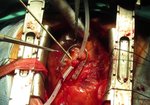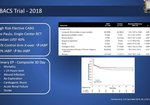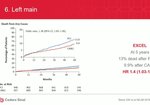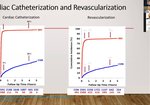
Video Player is loading.
Current Time 0:00
/
Duration 0:00
Loaded: 0%
Stream Type LIVE
1x
- 0.5x
- 0.75x
- 1x, selected
- 1.25x
- 1.5x
- 1.75x
- 2x
- Chapters
- descriptions off, selected
- captions settings, opens captions settings dialog
- captions off, selected
This is a modal window.
Beginning of dialog window. Escape will cancel and close the window.
End of dialog window.
10 seconds
Playback speed
This is a modal window. This modal can be closed by pressing the Escape key or activating the close button.
204 views
February 24, 2019
For surgeons learning microsurgery, uneven spacing between sutures while performing microvascular arterial anastomoses is one ...
read more ↘ of the most common technical errors made that can lead to leakage. Based on the previous surgical experience and training of these surgeons, the first option chosen to prevent bleeding is to place a vascular clamp proximal to the anastomosis and an additional suture at the site of the leak. Because this technique may have technical and thrombosis concerns, our study proposes an alternative technique of performing post-anastomotic revisions without the use of clamps.
Our technique involves placing a cotton-tipped applicator under the artery and lifting it to partially occlude flow within the vessel as an additional suture is placed at the leakage site to complete the revision. One-hundred eighty-four microvascular anastomoses were performed on the femoral arteries of 92 Sprague-Dawley rats, and of the 184 anastomoses, 147 had a leak and required a post-anastomotic revision. All revisions were completed using our technique, and no clamps were used during any of the revisions. Of the 147 post-anastomotic revisions completed using our technique, 141 (95.9%) were patent 2 hours post-revision. The mean operating time for the revisions was 5:03 minutes (range, 1:44–6:30 minutes).
Our technique of partially occluding an artery with a cotton-tipped applicator while performing a post-anastomotic revision is a safe and effective alternative to using vascular clamps. Our technique may also reduce technical errors and have a low risk of causing thrombosis when completing post-anastomotic revisions.
↖ read less
read more ↘ of the most common technical errors made that can lead to leakage. Based on the previous surgical experience and training of these surgeons, the first option chosen to prevent bleeding is to place a vascular clamp proximal to the anastomosis and an additional suture at the site of the leak. Because this technique may have technical and thrombosis concerns, our study proposes an alternative technique of performing post-anastomotic revisions without the use of clamps.
Our technique involves placing a cotton-tipped applicator under the artery and lifting it to partially occlude flow within the vessel as an additional suture is placed at the leakage site to complete the revision. One-hundred eighty-four microvascular anastomoses were performed on the femoral arteries of 92 Sprague-Dawley rats, and of the 184 anastomoses, 147 had a leak and required a post-anastomotic revision. All revisions were completed using our technique, and no clamps were used during any of the revisions. Of the 147 post-anastomotic revisions completed using our technique, 141 (95.9%) were patent 2 hours post-revision. The mean operating time for the revisions was 5:03 minutes (range, 1:44–6:30 minutes).
Our technique of partially occluding an artery with a cotton-tipped applicator while performing a post-anastomotic revision is a safe and effective alternative to using vascular clamps. Our technique may also reduce technical errors and have a low risk of causing thrombosis when completing post-anastomotic revisions.
↖ read less
Comments 0
Login to view comments.
Click here to Login




















